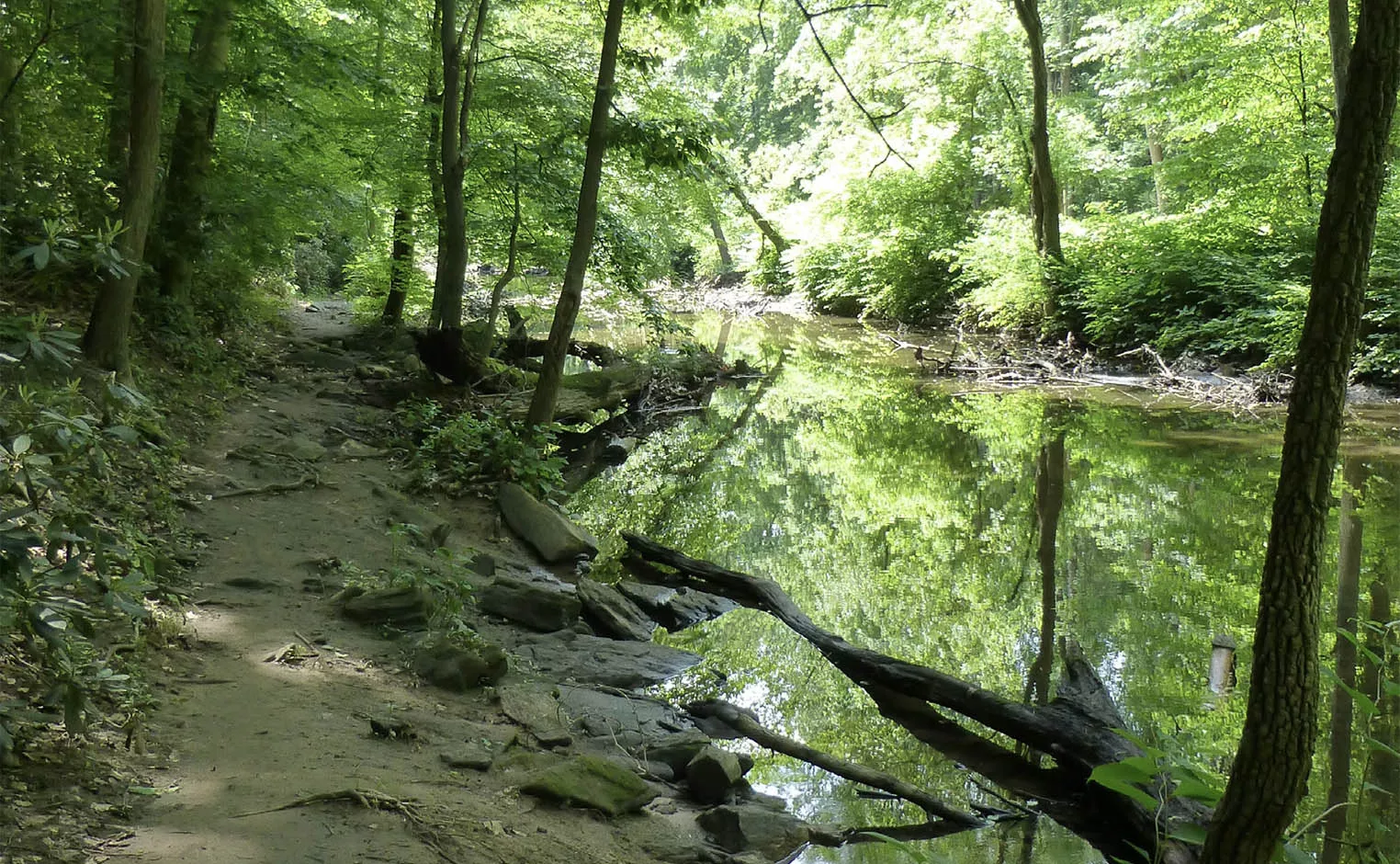Visiting Crum Woods

User’s Guide:
- The Crum Woods are open to visitors from sunup to sundown; visitors proceed at their own risk.
- Leave no trace. No plant material, minerals, animals, or artifacts may be removed and nothing should be left behind.
- Remain on existing trails to minimize erosion and loss of native habitat.
- Dogs must be leashed and owners must clean up after their dogs.
- Fires are prohibited.
The Crum Woods
The Crum Woods of Swarthmore College is one of the last remaining forested areas in Delaware County, Pa. With roughly 3.5 miles of walking trails extending over more than two hundred acres of land, the Crum Woods is significant not only for its large area and biodiversity, but also for the opportunities it offers for learning and recreation. The woods are used as a classroom and laboratory by the College, and provide recreational opportunities for all, including the broader community. Visitors are encouraged to wander the trails, observe the flora and fauna, and otherwise explore, contemplate, and enjoy the woods.
Crum Creek, which runs north to south through the woods, was originally called Ockanickon, by the native Lenni Lenape who lived on its banks. Following European settlement in the early 18th century, the Swedes renamed it Crumkill, meaning “crooked creek.” Over time, much of the land around the creek was cleared for agricultural and industrial use. During the Great Depression, under direction of the Scott Horticultural Foundation (which is today the Scott Arboretum) the Crum Woods was replanted with over 60,000 native trees and shrubs. John Wister, first director of the Arboretum, named the trails for acclaimed botanists and horticulturists. The trail names on this map match those on Wister’s 1939 hand-drawn map.
A Natural History
The bedrock of the Crum Woods is primarily comprised of soft schist and harder gneiss. The creek’s distinctive oxbows and sharp turns were defined by these rocks, as the water turned aside wherever it flowed against a large mass of gneiss. Many plant communities have grown up around the creek, including dry oak-heath forest, tulip tree-beech-maple forest, and red maple-mixed shrub palustrine woodland, each providing desirable habitat for native wildlife.
An Outdoor Classroom and Laboratory
Over the past ten years, students in more than 35 Swarthmore College courses have taken advantage of the opportunity to learn in the woods. Here, artists, dancers, and writers might encounter engineers, ecologists, or political scientists—or a group of second graders from the local elementary school. Crum Woods research initiatives by professors, students, and outside experts explore a wide range of topics. Recent projects include monitoring water quality; calculating the amount of carbon trees sequester versus the amount they release through leaf decay; analyzing wetland destruction; and studying the effects of deer population management strategies on the forest’s ability to regenerate.
Management and Conservation
The woods offer a crucial habitat for migrating birds and native species, but this valuable resource is under pressure from invasive non-native species, storm water run-off, erosion, deer grazing, litter, and more. The Crum Woods Stewardship Committee (CWSC) was created by Swarthmore College in 2000; its first mission was to establish a protection, restoration, and stewardship plan for Crum Woods. In 2001 the group commissioned the Conservation and Stewardship Plan for the Crum Woods by Natural Lands Trust and Continental Conservation. Since receiving the final report, the CWSC has been working to implement the recommendations of the plan, which can be read at www.swarthmore.edu/crumwoods. The dedicated volunteers of the Scott Arboretum Woods Crew maintain the trails and woods throughout the year. Regularly scheduled community clean-up and tree-planting days give everyone a chance to contribute to the stewardship of the woods. Swarthmore College welcomes gifts which will ensure the care and maintenance of the woods in perpetuity. If you would like to get involved or contribute to the well-being of the woods, please contact the members of the Crum Woods Stewardship Committee at crumwoods@swarthmore.edu.



